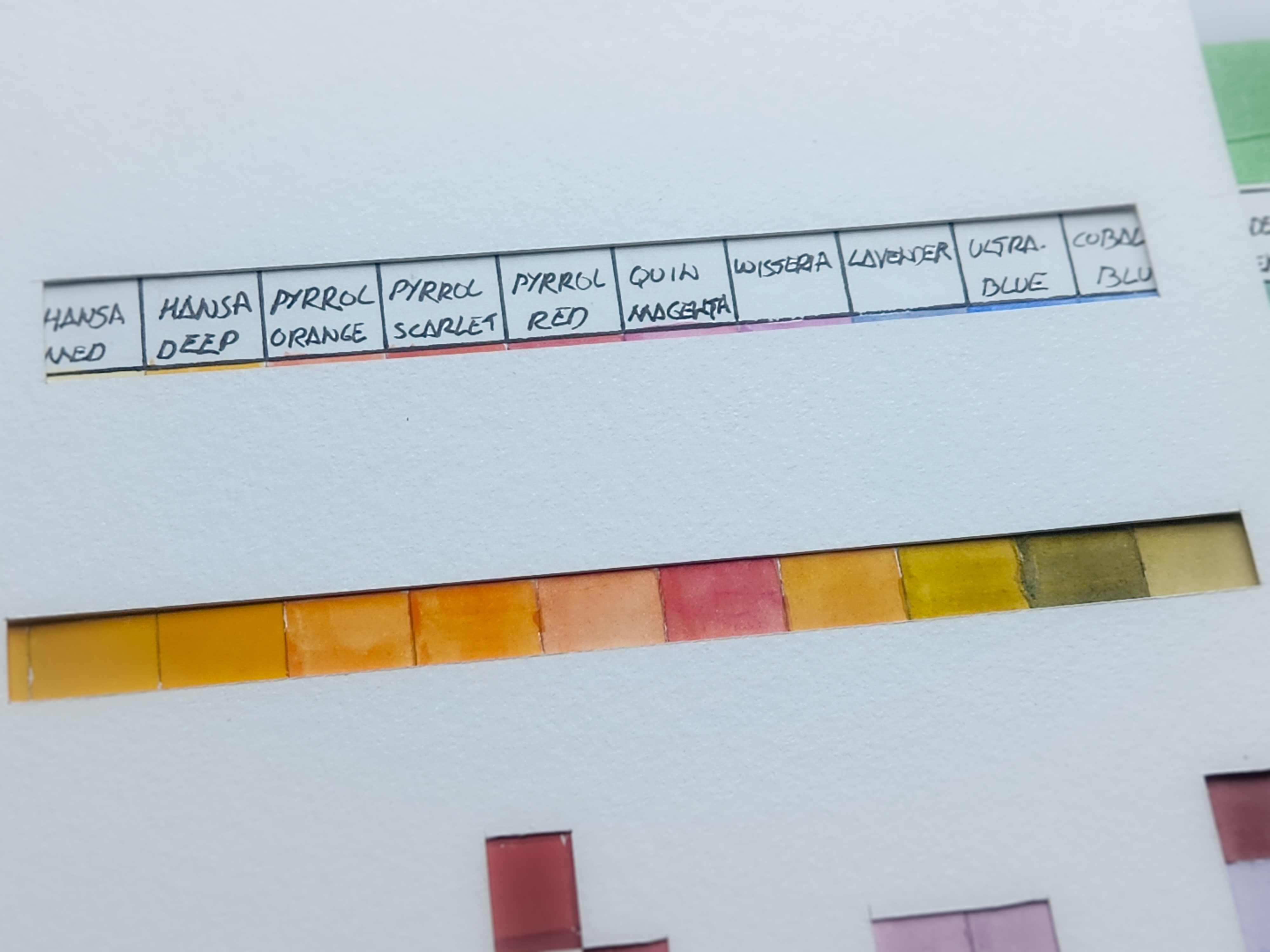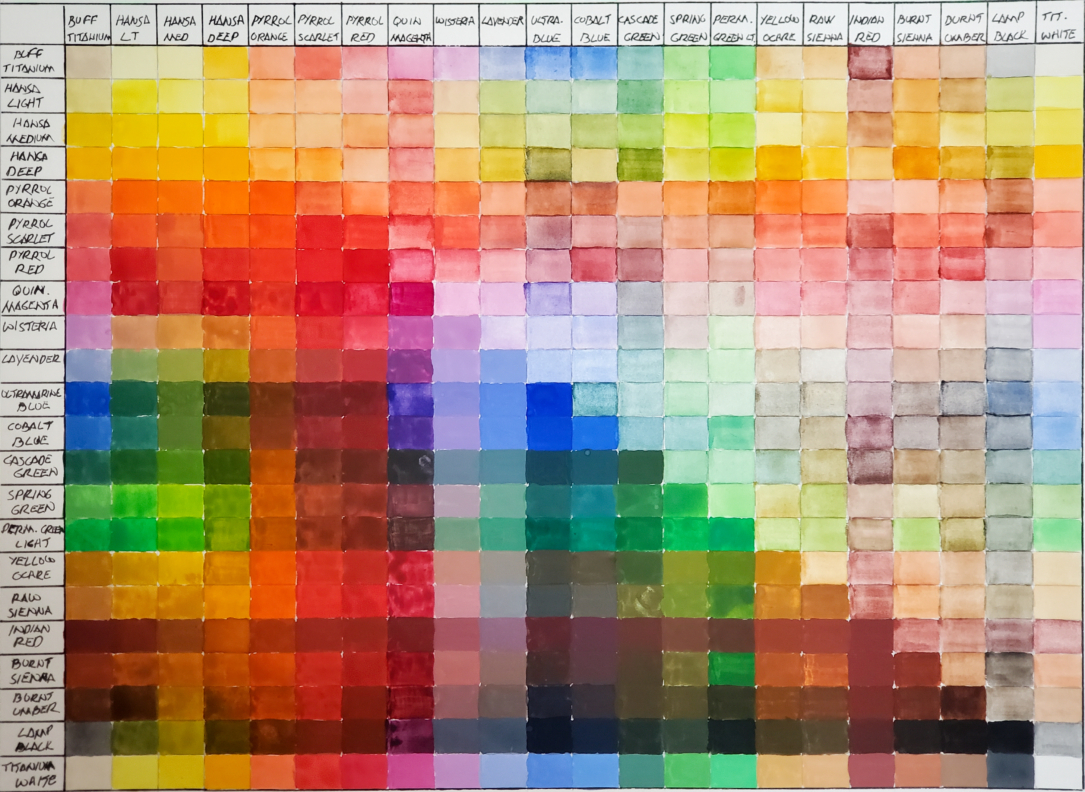Share:
I recently added a set of the new DANIEL SMITH GOUACHE paints to my collection. Most of my work is in watercolor, so gouache seemed like a good addition, as it’s also a water-based media. And they certainly were! Creamy, rich and opaque, they gave me a new way to explore my favorite parts of painting – color and texture.
For me, the most exciting thing about getting a new color is not just its own characteristics, but also how it’s going to work with other colors in my palette. One of the best ways to see this is by making a mixing chart, which gives me a preliminary idea of how two given colors work together. Then I can explore those colors further by creating swatches with varying pigment ratios. Since I had 22 new gouache colors, I decided to make a larger mixing chart that I could hang up on a wall for quick reference when planning color choices.
I started with a sheet of watercolor paper that was big enough to accommodate all 22 colors, which will result in 484 swatches. Then I used a ruler and pencil to divide the sheet into a grid with 22 square spaces on both the horizontal and vertical axes, leaving extra room for labeling. List the color names in chromatic order and paint the squares across the top and down the left side.
Now comes the fun part – mixing and swatching all the other squares in the grid. I laid out the pure colors first, where the horizontal and vertical names meet up. This will run diagonally across the chart, giving me two opportunities to mix the same two colors in different ratios, one above and one below this diagonal line. I used the bottom half of the chart to mix a relatively equal amount of each color, then I added more water to the mix for the top half, which represents the color in a lighter tone. You could also choose to add a little white or black to each mix to show a lighter or darker shade.
The full chart can look a bit overwhelming at first, with all the colors in all their glory right beside each other – but I have a trick that can help make color choices even easier – make some mixing chart masks!


Using a sheet of white cardstock, I cut out a few square shapes in various positions – two beside each other, 2 diagonally across from each other, and a longer strip of squares. Place a mask over your chart to view desired colors without the distraction of the neighboring swatches. If you primarily paint against a toned or black background, use a darker sheet of cardstock to make a mask.
I hope creating a color mixing chart makes the exploration of color more exciting for you – you never know what new combinations you might discover! Put it up on your wall and let it inspire you to dive deep into color and make the most of your art materials.







